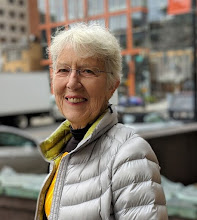A good friend who is a strong and active supporter of math-poetry links is Annapolis Naval Academy Professor Greg Coxson -- and, in a recent article (in this newsletter from a subgroup of the Mathematical Association of America -- MAA) entitled "Meet Me on the Bridge Between Mathematics and Poetry," Coxson offers several poems. One of these is "The Art of Numbers" by Scotland mathematician-poet Eveline Pye -- and she has given me permission to offer it in my blog:
The Art of Numbers by Eveline Pye
We talk of beautiful words, art, buildings
when they're not part of the natural world.
An x in Algebra is no more abstract than
an idea in philosophy, just more useful.



